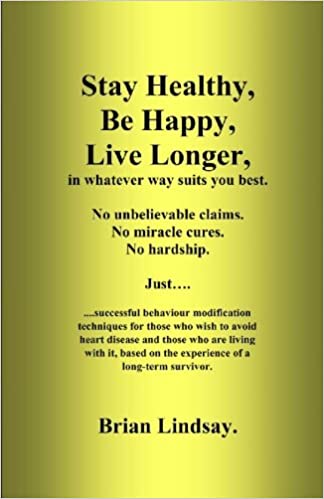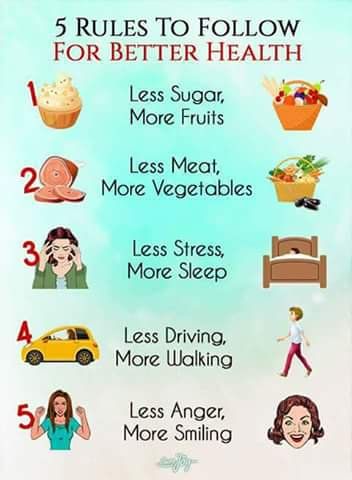
A school PTA has many benefits for schools. First and foremost, it can help to boost the morale of teachers and administrators. Parent-teacher relations can be adversarial, so PTAs can foster a more positive atmosphere between parents and teachers. PTAs, for example, can give supplies to schools or award prizes to teachers. Regardless of the specific function of a PTA, its activities are helpful to teachers and students.
A PTA is a great asset to a school. It creates a positive school environment and brings together staff, parents, and teachers. Strong PTAs have higher attendance and lower dropout rates. This is because parents who are invested in their child's education are more likely to make sure their children attend school. The benefits of a PTA are many. These are just a few benefits of joining a PTA at school.

The school's PTA can assist with school work by advocating for important issues in the community. They can also help the school with its curriculum and other matters. The school can benefit from a PTA if they are active. While the pta can be a great asset for a school, it can also cause damage to the education system. The school PTA cannot replace the principal.
Recognition from school PTAs is another benefit. By getting involved, parents can improve the school's culture. Parents can help their children with homework and other school-related issues. In the past, PTAs were more likely to offer more support for the school and its students. These organizations were less influential and harder to recruit new members because they were inactive. This is because PTA was not recognized in professional organizations, but rather as a volunteer-based group.
PTAs are a valuable resource in a school community. The members of the PTA can raise funds for school activities. They can sponsor fundraising events, help organize school events and even participate in school events. A PTA could grow in size with the support of the entire school. Being transparent and open about your PTA goals and what issues are important to the school is the best way to establish one.

PTAs offer many benefits to schools. PTAs typically have a webpage detailing their role, duties and how to get involved. You can join the PTA’s social media pages, or one of its websites. The school pta may also be able to help you get involved in the school community. It is a great method to increase parent involvement in schools.
FAQ
Which order is best for working out?
It all depends upon what you are trying to achieve. First, lift heavy weights if you are looking to increase muscle mass. Then you can move to cardio. Next, if you're looking to lose weight then switch to strength training.
You can burn fat by just doing cardio. Next, add strength training.
You should do cardio last if your goal is to increase muscle mass. This stimulates growthhormones, which helps build muscle mass.
Also, eat before you workout. This will fuel you muscles better, which will make it work harder. Plus, it makes you feel better during your workout.
Is Cardio Better Than Strength Training?
Both are equally excellent. But cardio is a much better choice if you want to gain muscles faster.
Cardio burns more calories in a minute than strength training and more fat.
Strength training is a great way to build muscle mass. However, it takes more effort than cardio.
How often should you exercise per week?
It all depends upon how much time you have and what type or exercise you prefer. The general rule of thumb is to exercise aerobically 3 - 5 days per week. It's important that you don't overdo it. For maximum results, consistent exercise is key to getting the most out of your workouts.
Which exercises are best for me?
It really depends on the type of fitness goal you have. Some people prefer endurance sports like swimming, cycling, or running. Others love lifting weights or using resistance bars. There are many types of exercise programs today. Pick the option that fits your needs.
What food should I avoid if I want to lose weight
Avoid trans fats. Trans fats increase LDL (the harmful) cholesterol and lower HDL (the good).
Trans fats can be found in fast food, deep-fried foods, packaged baked goods, snack cake, and other processed foods.
These unhealthy fats cause inflammation which leads to heart disease, diabetes, and other health problems.
Avoid foods containing artificial sweeteners. Artificial sweeteners may increase your chance of getting cancer.
They are found in everything, from soft drinks to chewing tobacco to candy bars. These chemicals are also found in meat, poultry, eggs, and other foods.
Artificial sweeteners include saccharin, cyclamate, sorbitol, aspartame, acesulfame-K, and sucralose.
The American Heart Association recommends that these chemicals be avoided as they can damage DNA.
What does butter do to men?
Butter is one of many good sources of saturated fats. This type of fat contributes to healthy skin, hair, and stronger bones.
Vitamin K, found in butter is an antioxidant that prevents bleeding from cuts. Vitamin K works with vitamin A to prevent bleeding.
Butter is also rich mineral, including calcium and phosphorous. These elements are good for teeth and bones.
Butter has its drawbacks. Butter contains high levels of cholesterol. There are studies that show excess cholesterol may increase the likelihood of developing cardiovascular diseases.
Butter is also high-fat, which can contribute to obesity and increase cholesterol.
Butter can be spread on bread, but you don't have to dip it into soups or salads if you absolutely must. Bread absorbs oil more than pasta or potatoes.
What is a good gym routine for you?
Regular exercise is essential to staying fit. It doesn't matter what type of fitness activity you choose as long as you do it regularly. The key thing is consistency. It is important to stay consistent in order to get results.
Begin by walking for a few minutes each day. Then gradually increase the time spent exercising until you spend 30 minutes a day working out. You could do this by running, swimming, weight training or yoga.
Try to get active every day. Don't miss any sessions unless you have an excuse.
If you exercise outside, ensure that you wear appropriate clothing and footwear. Also, consider weather conditions and how they might affect your ability or safety while exercising.
When you exercise, drink plenty of fluids. Drinking alcohol at this time can lead to dehydration. Caffeinated beverages such as tea, coffee, and cola should be avoided. They can provide energy, but they also dehydrate.
At first, it's normal to feel tired after you finish your exercise routine. But if your workouts are continued, you will feel more energetic.
What does milk do for men?
Next time you buy milk think about what you could do with it. It may be a good idea to reduce your coffee intake.
Both children and adults have been shown to benefit from milk. Children get nutrients like vitamin D, calcium and potassium from milk.
It helps with digestion, promotes weight growth, and improves bone strength. Milk products can help adults have better immunity systems and less illness.
People who have difficulty digesting milk are also likely to be able to enjoy its many benefits, even if they do not have stomach problems.
Consider drinking more milk, instead of sodas or juices. You can strengthen your teeth with the extra calcium and vitaminD found in milk.
Plain low-fat milk can be used to make yogurt if you don’t like the taste. Yogurt has lower calories and is richer in protein than milk.
Yogurt also contains probiotics, which aid in digestion and improve immunity.
Try warm milk to help you fall asleep. Warm milk relaxes the muscles and increases serotonin levels. It will give you a restful night.
Statistics
- 10 pounds in a month is likely during a lean bulking phase, especially for beginners. (muscleandstrength.com)
- Are You One of the 20% of Guys (mh.co.za)
- According to the American Academy of Dermatology (AAD), men over 50 are at a heightened risk of developing it. (healthline.com)
- Cardmembers earn 5% Back at Amazon.com with a Prime Credit Card. (amazon.com)
- By John Thompson Take a whopping 38% off a set of PowerBlock Pros. (menshealth.com)
External Links
How To
How can I burn fat and exercise?
Exercise burns calories by increasing metabolism and oxygen consumption.
Exercise at a moderate intensity to safely lose weight.
These are the top tips for burning fat while you exercise.
-
Cardio exercises include swimming, running or cycling.
-
Exercise for 30 minutes three times per week.
-
Strength training is a great way to lose weight.
-
Avoid intense workouts. It's possible to build muscle, but not lose it.
-
During exercise, drink plenty of water. Water flushes out toxins, and keeps your body properly hydrated.
-
After working out, drink low-fat protein shakes. Protein shakes help repair muscles and boosts energy.
-
Take smaller meals throughout each day to avoid feeling hungry.
-
Don't skip breakfast! Skipping breakfast can leave you feeling tired and sluggish.
-
Take care to your mental well-being. Stressful situations can slow your metabolism.
-
Keep a positive attitude. Studies show that overweight people are more likely to be obese than those who perceive themselves as attractive.
-
Get enough sleep. It is harder to lose fat if you don't get enough sleep.
-
Keep active. Make sure you get up and move every hour.
-
Maintain a healthy diet. You will feel fuller longer if you eat right.
-
Find ways to relax. Your body won't release stress hormones that cause muscle tissue destruction if you have a tense mind.
A balanced diet contains all necessary nutrients for growth and development.
Instead of eating three large meals a day, eat six smaller meals every day. This gives your body time and energy to process the food.
For strong bones, we need 500 mgs of calcium daily. Calcium is found in dairy products like yogurt, fortified milk beverages, orange juices, cereals and bread.
Calcium comes from leafy green vegetables, beans, tofu, nuts, seeds, and cheese.
Vitamin D is essential for calcium absorption. Vitamin D is found in certain fortified foods, such as egg yolk and fatty fish.
Vitamin E is crucial for skin health. It's found in vegetable oils, wheat germ oil, peanuts, almonds, sunflower seeds, and corn.
Your body needs zinc to maintain normal immune function and heal wounds. Zinc can be found in seafood, legumes and meats.
Zinc deficiencies can lead to fatigue, decreased appetite, depression, and reduced immunity.
Too much sugar leads to insulin resistance. This results in higher blood glucose levels. Insulin resistance leads directly to weight gain.
Insulin resistance is caused by high blood levels of free-radicals. Free radicals are molecules containing unpaired electrons which cause damage to cells membranes.
The most common sources of free radicals include food additives.
Free radical damage can lead cancer, heart disease or diabetes, arthritis, asthma, or other forms of aging.
To prevent free radical damage, eat a healthy diet rich in antioxidants. Antioxidants protect against oxidative damage.
Vitamin C is found in citrus fruits and beta carotene is found in carrots.
Other antioxidant nutrients include selenium, copper, manganese, and zinc.
Selenium helps protect cells from oxidative damage caused by free radicals. Selenium can also be found in Brazil nuts (tuna), liver, kidneys and shrimp.
Copper protects eyes, brain, lungs and red cells. Copper is found in shellfish, poultry, meat, and organ meats.
Manganese plays an important role in bone structure. Manganese is found in brown rice, spinach, bananas, prunes, raisins, oatmeal, and lentils.
Zinc is required for normal growth, reproduction and wound healing. Zn is found in lean meats, poultry, white fish and eggs.